Shepherd’s Purse – Identification and Use
This post may contain affiliate links. Read my full disclosure here.
Today’s featured plant is Shepherd’s Purse, Capsella bursa-pastoris. This non-descript plant is both gourmet green and powerful medicine. Samuel Thayer calls it the “most underrated wild edible” and praises the leaves and roots. The book “Backyard Medicine” hails it for stopping bleeding and reducing inflammation.
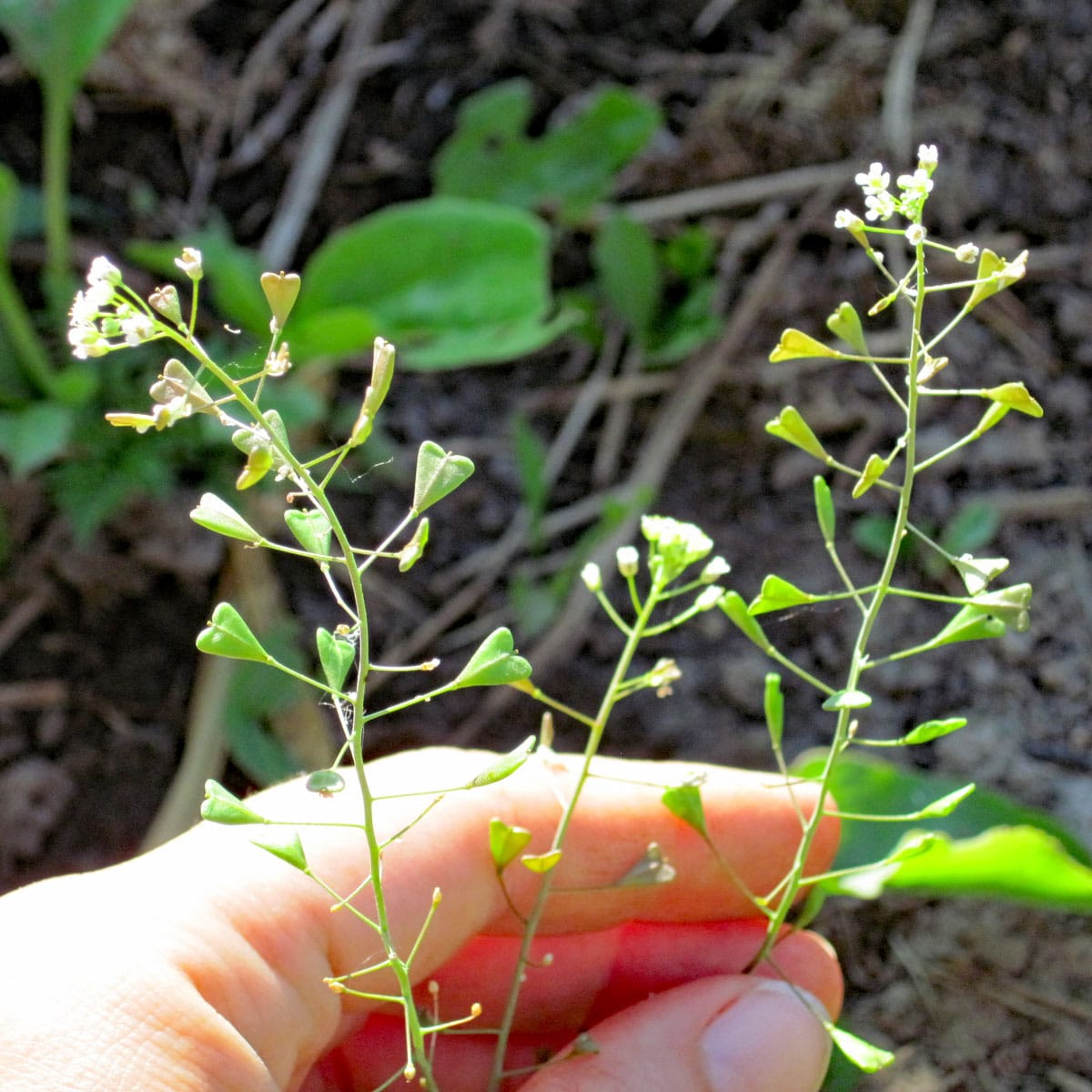
Shepherd’s Purse Range and Identification
Shepherd’s Purse is a common weed, found throughout the world, though it’s native to Eastern Europe. It’s a hardly annual with seedlings that sprout in fall and then sit through winter as small rosettes less than 2 inches across. They easily survive temperatures to 0 degrees F.
This initial rosette gives way to a larger rosette a few inches across, with deeply toothed leaves. The plants produce multiple 4 to 20 inches tall flower stalks. Stem leaves alternate up the stalk, and get smaller and less lobed near the tip.
As these stalks grow, purse-shaped (or heart shaped) seed capsules form along the flower stems. These seed pods are easy to spot, and probably the easiest way to ID the plant.
The flowers are small and white, with four petals. Shepherd’s purse flowers year round, as temperatures allow. The plant reproduces by seeds – lots of seeds. A single plant can produce from 500 to 90,000 small, light brown seeds.

How to Eat Shepherd’s Purse
Always make sure to positively identified a plant before use.
Both the greens and roots of shepherd’s purse are edible. Once it flowers, it becomes tough and chewy. Harvest the greens (and roots, if desired) in winter or early spring for best eating quality.
Like many mustard family plants, the leaves have a slight peppery flavor. They’re high in omega 3 fatty acids, calcium, iron, zinc, and vitamins A, B, and C. Eat the small leaves raw in salads, or cook mature greens.
Chop seed pods and use for a peppery flavor in soups and stews. Add them near the end of cooking time. Use the seeds as a pepper substitute, either whole or ground.

Although not commonly eaten in the US, Capsella bursa-pastoris is a delicacy in some areas of Asia. It’s used for won ton filling, seasoning rice, for meat stuffing in dumplings, and more. (This Shanghai Rice Cake Stir-fry with Shepherd’s Purse is an example.)
When gathering the wild plant, make sure to wash the leaves well. The fine hairs on the plant tend to hold onto grit. (You may be able to find frozen packages of the greens in Asian grocery stores.)
In Incredible Wild Edibles, Samuel Thayer notes that some references suggest using the root as a ginger substitute. Apparently this suggestion stems from a 1958 book called Using Wayside Plants, where the shepherd’s purse entry was next to the wild ginger entry. The information was mixed by another author, and has been spread around ever since.
The roots do not taste like ginger, but have a mild peppery flavor like the rest of the plant.
Medicinal Use
Shepherd’s purse has been used for a wide variety of medicinal purposes, including to stop bleeding, reduce inflammation, treat digestive problems, and even to remedy bedwetting. The plant contains a number of biologically active compounds, including flavonoids, alkaloids, and tannins, which are believed to be responsible for its medicinal properties.
One of the primary uses of shepherd’s purse is to stop bleeding. This makes it a useful remedy for nosebleeds, heavy menstrual bleeding, and wound treatment. It was commonly used by soldiers on the battlefield in WWI. Crush the fresh leaves of the plant to use as a poultice for nosebleeds or cuts.
Shepherd’s purse also treats digestive problems. It has been traditionally used to improve appetite, stimulate digestion, and relieve indigestion and stomach cramps. The plant contains compounds that help to increase the production of digestive enzymes, which can improve the digestion of food.
Shepherd’s purse may be useful for treating inflammatory conditions such as arthritis and gout. It may also help to reduce fever and relieve pain.
In “Backyard Medicine”, the author describes how they used the plant to treat both uterine and bladder prolapses.
Another potential use of shepherd’s purse is in the treatment of urinary tract infections. The plant has diuretic properties, which means it can increase urine production and help to flush bacteria out of the urinary tract. It may also have antimicrobial properties that can help to kill the bacteria that cause urinary tract infections.
See “Anti-Inflammatory and Anti-Superbacterial Properties of Sulforaphane from Shepherd’s Purse” for a discussion of its actions against “superbugs”.
Shepherd’s Purse Tincture
Pick the plant while it’s flowering, preferably in summer. Fill a jar with the chopped herb (including flowering tops) and cover with vodka. Cap the jar and store it in a cool, dark location for about a month.
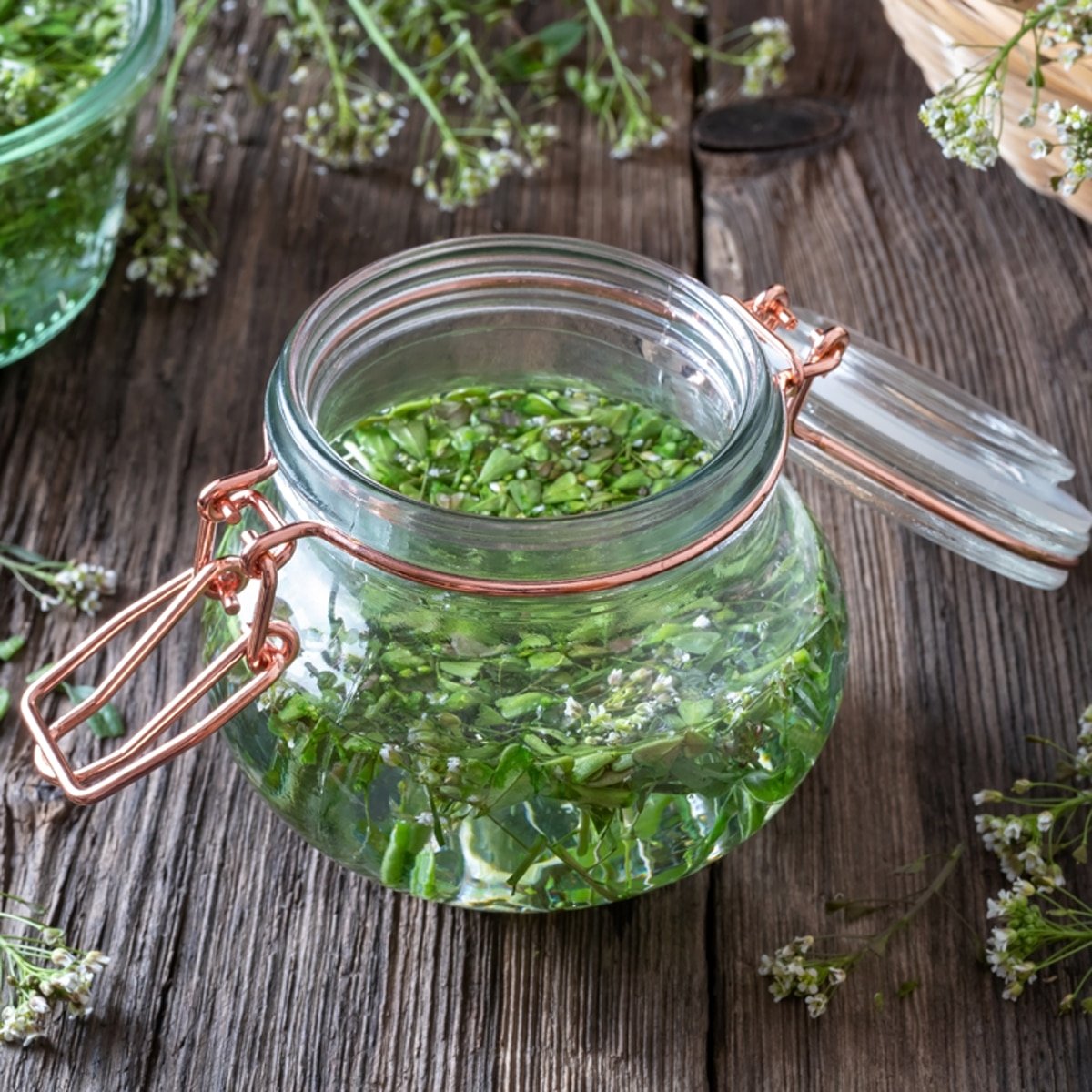
Shake the jar daily, or as frequently as you can remember. After a month has passed, strain off the liquid and store it in a bottle. Date and label, and store out of direct sunlight.
Would you like to save this?
For heavy menstrual flow, dosages range from 1-30 drops, 3 times per day. The herb is also used for postpartum bleeding, hemorrhages, and more.
Contraindications
While shepherd’s purse is safe when used appropriately, there are some potential side effects to be aware of. Large doses of the plant may cause digestive upset, and some people may be allergic to it. Avoid using shepherd’s purse during pregnancy, as it may stimulate contractions and cause miscarriage.
As with any herbal remedy, check with your healthcare provider if you are on any medications.
If you can’t find shepherd’s purse in your garden, it is available online as seeds, bulk dried, in capsules, and in extract.
Getting Rid of Shepherd’s Purse in the Garden
The seeds stay viable for over 35 years in the soil, so don’t let them seed out if you have too many plants. To keep the plants from seeding out, pull them when the soil is moist to get the entire tap root.
In the book “When Weeds Talk”, they note that Shepherd’s purse favors dry soils with very low available calcium, and low humus. If you improve soil health, weed issues generally resolve themselves.
Meanwhile, the book “Weeds, Control Without Poisons”, notes that both chickens and sheep are more than happy to eat it.
Wildlife Uses
The leaves serve as food for grazing animals, and many small mammals and birds eat the seeds of shepherd’s purse. Bees, flies, wasps, butterflies and skippers feed on the small flowers. (For a detailed list of nectar feeders who use this plant, visit Illinois Wildflowers.info.
Other Names
Other names for Shepherd’s Purse include Blind Weed, Bolsa del Pastor, Bolsa-de-Pastor, Bourse a Pasteur, Bourse-à-Pasteur, Bursae Pastoris Herba, Capsella, Capselle a Pasteur, Capsella bursa-pastoris, Caseweed, Cocowort, Erva-Do-Bom-Pastor, Hirtentaschel, Lady’s Purse, Mother’s-Heart, Naeng-i, Pepper-And-Salt, Pick-Pocket, Poor Man’s Parmacettie, Rattle Pouches, Sanguinary, Shepherd’s Heart, Shepherd’s Scrip, Shepherd’s Sprout, Shovelweed, St. James’ Weed, Thlaspi bursa-pastoris, Toywort, Witches’ Pouches, and Zurron de Pastor.
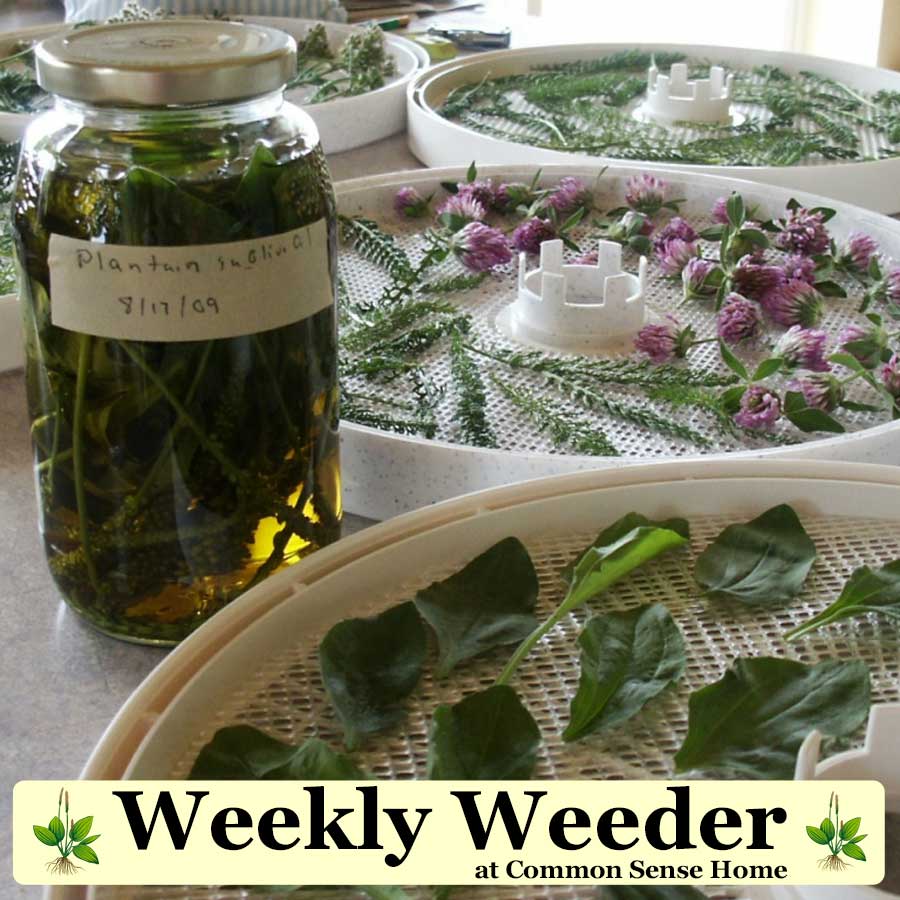
More Wildcrafting Information
This article is part of the Weekly Weeder series, which shares how to use wild plants for food and medicine.
Other articles in the series include:
My Favorite Wildcrafting Books and Resources
Chicory – The Coffee Root Plant
Chickweed – The Inflammation Soother

This article is written by Laurie Neverman. Laurie was raised on a small dairy farm in northwest Wisconsin, where she gathered wildflowers from the woods and pastures. Now she and her family have 35 acres in northeast Wisconsin, where they cultivate biodiversity with a combination of intentional plantings and semi-wild areas. Every season is a new opportunity to learn more about working with wild plants.
Originally posted in 2011, last updated in 2023.

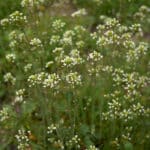
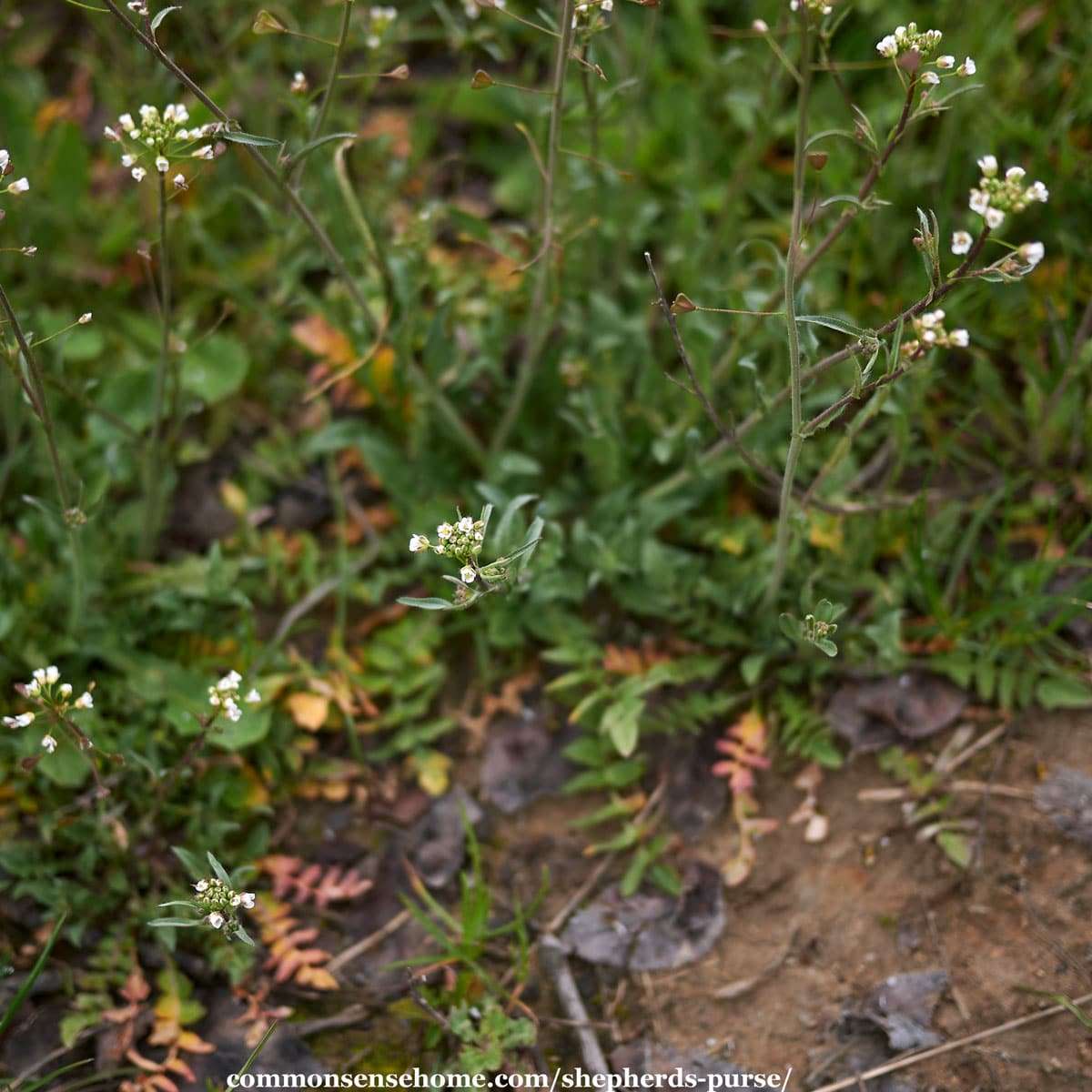
Thank you for the info on Shepherd’s Purse. I’ve been going out each morning, through the yard and garden areas, picking various greens and flowers to eat first thing. I’ve been seeing lots of Shepherd’s Purse and have been intending to look it up to see if it’s something I could add to the greens, so your post is very timely for me. 🙂
You’re welcome. We’re still thawing here, but I figured it would be a good time for those in warmer areas to harvest.